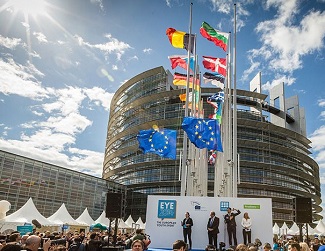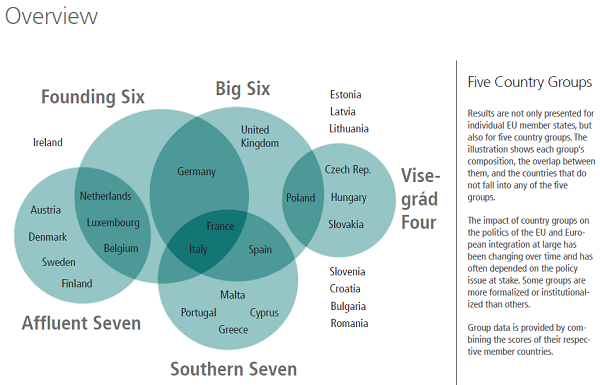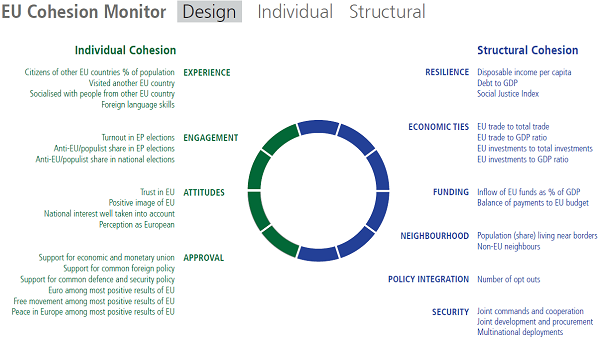 The Berlin Think Tank European Council of Foreign Relations (ECFR) published the 2018 edition of the EU Cohesion Monitor – an analysis of the cohesion of the 28 EU members.
The Berlin Think Tank European Council of Foreign Relations (ECFR) published the 2018 edition of the EU Cohesion Monitor – an analysis of the cohesion of the 28 EU members.
From a European perspective, Italy is the most worrying – according to the study, this country has experienced the deepest decline in its attachment to the Union.
In Bucharest, though, the reason of concern should be totally different: Romania, together with other seven member states, forms a special group of the EU states that ECFR ignores from any type of association and analysis.
From a superficial perspective, we might think that the lack of interest shown by the authors of the analysis could be explained by the „ingrate” geographic position that Romania has, which does not place us „naturally” in the groups of states analysed by ECFR.
Looking more closely, first and foremost at the internal actions but also at the performance at the European level, we should pay tribute to the reality: we are not included in the analysis because we simply do not have relevance in the European context. And this will have consequences.
(only one clue: the EU Cohesion Monitor is part of the Rethink Europe project).
In „big league”: the great, the rich, the first, the southern and Visegrad
For its report (the report that can be downloaded HERE-LINK), ECFR combines a total of 32 factors within a set of 10 cohesion indicators for each of the 28 EU member states. The figures are extracted from the reports of the European Commission, from the statistics available to the Commission and Eurobarometers published between 2007 and 2017.
Researchers have also considered structural cohesion indicators – intra-community economic relations or joint projects, for example.
And the „picture” of the European Union looks, based on the ECFR data, like this:
 As can be seen from the explanations, member states are grouped into five categories based on the cohesion Indicators. The above illustration shows the composition of each group but also the junction between these groups.
As can be seen from the explanations, member states are grouped into five categories based on the cohesion Indicators. The above illustration shows the composition of each group but also the junction between these groups.
The indicators shape five important groups within the EU: the six founders, the big 6, the rich 7, the southern 7 and the Visegrad group.
Also based on these indicators, Ireland, Slovenia, Croatia, Bulgaria, Romania, Estonia, Lithuania and Latvia are not assigned to any group.
A clearer picture of these 10 cohesion indicators is presented in the chart below:
 The authors of the study also provide explanations: for the „Financing” indicator, for example, it is reasoned that the influx of resources generated by the European funds strengthens the idea of the benefits that relate to the membership of the community group.
The authors of the study also provide explanations: for the „Financing” indicator, for example, it is reasoned that the influx of resources generated by the European funds strengthens the idea of the benefits that relate to the membership of the community group.
At the same time, the fact that a state is a net contributor to the EU budget gives the authority to the respective state to shape the future of the organization, which will contribute to the involvement in the European project.
… and the rest of the world
From the perspective of the ECFR think-tank, eight of the other 28 EU countries are not included in any category of analysis because the figures do not make them suitable anywhere.
Not even in a formal group, such as Visegrad, formed based on the political will of the members. But, an important mention, without economic performance, the Visegrad group would not have existed in the analysis.
The indices assigned to Romania are as follows:
 Here, the first thing that might be striking is the structural cohesion indicator „Security”, which contrasts with the general feeling of peace and quiet that has taken hold in Romania after the US missile shield has become operational.
Here, the first thing that might be striking is the structural cohesion indicator „Security”, which contrasts with the general feeling of peace and quiet that has taken hold in Romania after the US missile shield has become operational.
But the feeling of wonder can manifest only for those who forgot that we were not able to carry out a task set by NATO allies, to organize a naval force in the Black Sea.
Or that we participate in only 4 of the 17 European projects approved in the field of comprehensive military cooperation.









